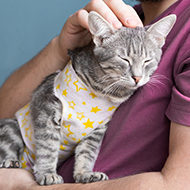Skin cells could protect salmon from sea lice, study finds
Gene editing could improve Atlantic salmon's sea lice resistance.
A study into how coho salmon fend off sea lice could lead to genetic developments for Atlantic salmon populations.
Researchers from the Royal (Dick) School of Veterinary Studies examined how the skin cells of coho salmon are able to protect the fish from the parasite’s destructive effects.
Sea lice are parasites which feed on a fish’s skin and fins, resulting in open wounds that can become infected. As well as reducing the value of farmed fish, these parasites can have a knock-on effect on wild salmon populations.
Atlantic salmon have proven to be especially vulnerable to sea lice, with the outermost layer of their skin rapidly breaking down.
Initiatives to protect Atlantic salmon aquaculture have previously proven ineffective and expensive, costing the industry over £700m a year. These treatments have also posed a threat to the environment and animal welfare.
However, although Atlantic salmon are susceptible to sea lice, coho salmon has a resistance to the parasite. When sea lice attach to a coho salmon, it is able to start localised swelling to kill and remove it.
The study aimed to discover the role of cell types and gene expression patterns in protecting coho salmon and consider how this can be implemented with Atlantic salmon.
To investigate this, researchers utilised a novel type of RNA sequencing to characterise the gene expression of individual cells.
Although both species had similar immune and wound-healing responses, the coho salmon’s keratinocytes in the three outer layers of skin proved to be a significant defence against infection.
The keratinocytes in the bottom layer of skin are able to direct the expansion and movement of cells in the middle and top layers of skin. These can then encapsulate and expel parasites.
The findings also suggested that sea lice had been weakening the immune systems of Atlantic salmon.
Researchers believe that these discoveries could inform gene editing to improve Atlantic salmon’s sea lice resistance. They suggest that they could target the genes which contribute to Atlantic salmon’s susceptibility and coho salmon’s resistance.
Sarah Salisbury, a postdoctoral research fellow at the school’s Roslin Institute, said: “We were able to pinpoint with unprecedented resolution the types of cells responsible for the skin swelling response used by coho salmon to resist sea lice, as well as those cells targeted by sea lice in Atlantic salmon to weaken this host species
“These insights pave the way for the development of transformative therapies to counter this devastating parasite.”
The full study can be found in the journal BMC Biology.
Image © Shutterstock



 RCVS Knowledge has called on vet practices to audit their post-operative neutering outcomes.
RCVS Knowledge has called on vet practices to audit their post-operative neutering outcomes.